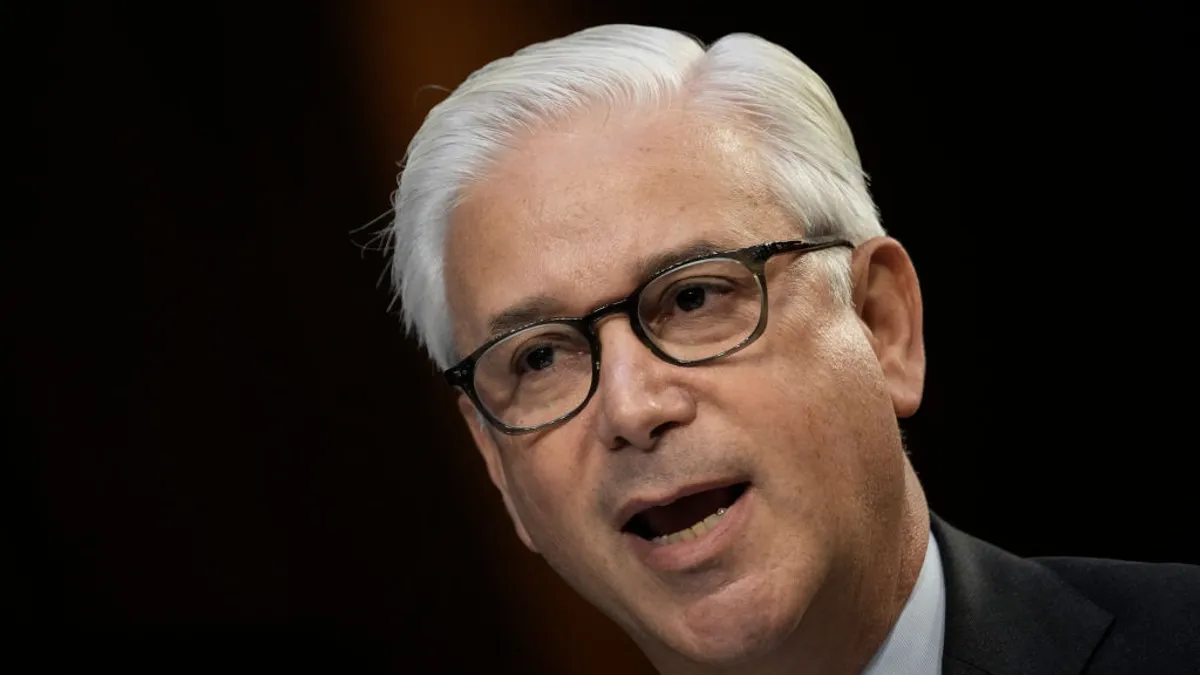Varo Bank has moved its technology organization under a single umbrella group called Varo Tech, a move it said will increase the pace of product development, reduce costs and allow more internal collaboration among business units.
“It's about that collaboration and that integrated way of working that is so much more efficient,'' said Colin Walsh, the company’s CEO. “It’s not thinking in terms of the traditional product and channel silos the way banks do.”
Walsh said the group’s work will be organized around holistic approaches to solving customer problems. Varo Tech launched this summer as the company cut 75 jobs, or 10% of its workforce, amid reports the bank could run out of funds by year-end.
Varo Tech brings together engineering, product, design and data teams, a move that’s helping the company realize efficiencies, Walsh said.
“You don’t have to attend as many meetings, you don’t have to spend time bringing people together, you don’t have to do a lot of rework,” he said. “It allows us to do a lot more with fewer resources.”
Trimming marketing expenses was also part of the company’s restructuring plans announced this summer, with a pullback on “big brand campaigns,” Walsh said.
The consolidation of Varo’s technology organization is consistent with moves of other financial firms pursuing agile product development, an approach where teams work cross-functionally to release products faster and in lockstep with customer pain points.
The company brought in new talent to facilitate these changes, including Jon Alferness as chief product officer in February. Alferness was previously Lyft’s vice president of rideshare, with stints in senior leadership roles at Pinterest and Google.
Matt Markham, a partner at Capco, said Varo’s moves align with actions of other financial firms pursuing customer-first product development strategies with integrated tech teams.
“They're solving the problem of having all these siloed things that weren't interconnected, didn't hang together and were harder to manage and maintain from a technology perspective,” he said. “It’s about bringing together all the various stakeholders so that everyone has that common goal in mind.”
The restructuring of Varo’s technology team and drawdown of marketing expenses may help the company improve its financial position — Varo posted a net loss of $77 million in the second quarter — but the company still faces questions over its long-term growth and profitability prospects, said Jason Mikula, a fintech analyst.
Varo obtained a national bank charter in 2020, and the company said it has 6.8 million accounts, up 196% in two years. Walsh noted that over the past four months, the company has cut customer acquisition costs by 70% to 80%.
Walsh said expectations that a de novo bank would be profitable two years after gaining a charter aren’t realistic. He maintained that obtaining a bank charter was the best decision the company made, allowing it to gather deposits, lend on those deposits and invest them.
Walsh said Varo plans to expand its lending and payments offerings — including rolling out peer-to-peer payments tool Zelle — along with possible forays into wealth management. The bank is not pursuing a banking-as-a-service model at this time, though it is open to future partnerships, he said.
“A little bit further afield, as we see customers starting to achieve positive cash flow … we’re looking at fractional investing, and much further down the road, we'd love to find a way to help customers get on the housing ladder,” he said.
Despite the advantages of having a charter, Varo has struggled to monetize its customer relationships. In that respect, a banking-as-a-service model may be the best path, Mikula argued.
“On the economics side, with the customer segment Varo currently serves, the charter isn't particularly accretive,” he said. “Varo users are low income, low balance, high credit risk. Varo has struggled to grow a meaningful loan book lending to its own customers, and there is no indication the company has a plan to fix that.”












